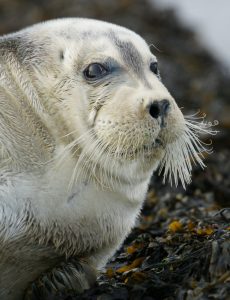30 December 2022: Bearded seals in the Atlantic Arctic: review of post 2010 knowledge available for informing stock assessments
It is our pleasure to announce the publication of a new literature review published in Volume 12 of the NAMMCO Scientific Publications series – Marine Mammals in the North Atlantic.
The review Bearded seals in the Atlantic Arctic: review of post 2010 knowledge available for informing stock assessments is authored by Nicolai Scherdin (former intern at NAMMCO), and co-authored by current intern Jana Djukarić and NAMMCO General Secretary Geneviève Desportes.
Abstract
The last extensive (pan-Arctic) review on knowledge available on the bearded seal (Erignathus barbatus) was conducted by Cameron et al. in 2010. As bearded seals are hunted off Svalbard and Greenland but no stock assessments are available, NAMMCO requested a status review, and if possible, an assessment of the species in its area. This literature review attempts to summarise the knowledge that has become available post 2010, with a focus on the Atlantic Arctic. A large amount of information has become available on the behaviour of the bearded seal, with hearing, vocalisation, haul-out behaviour and movement patterns (through satelitte tagging), and their phenology, being well studied. A database of baseline blood parameters is slowly being built but is still limited. New data on distribution has emerged from PAM studies and non-targeted surveys. Abundance estimates are missing for Svalbard, but partial estimates have become available for the North Water Polynya in 2009 and 2014.

© Mike Pennington
Additionally, observations of bearded seals from aerial line-transect surveys are available for several areas of Greenland but have not been analysed. More information has become available on the impact of anthropogenic stressors, such as climate change and other related environmental changes, although demographic impacts of changes are missing. Catch data exists for both Svalbard and Greenland, but for the latter the data needs to be thoroughly validated. In summary, information on stock structure as well as local and global abundance estimates, which are both important to assess the sustainability of current catches, are still missing. However other lines of evidence can inform the delineation of management areas and the results of a pan-arctic genetic study should become available shortly. There is survey data available from Greenland that could be used to generate local abundance estimates, the analysis of which should be prioritised.
Read the full article here
Learn more about bearded seals in the NAMMCO management areas here


